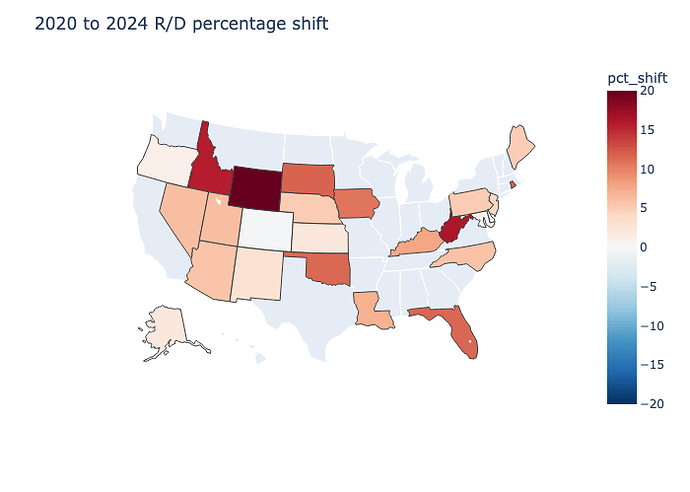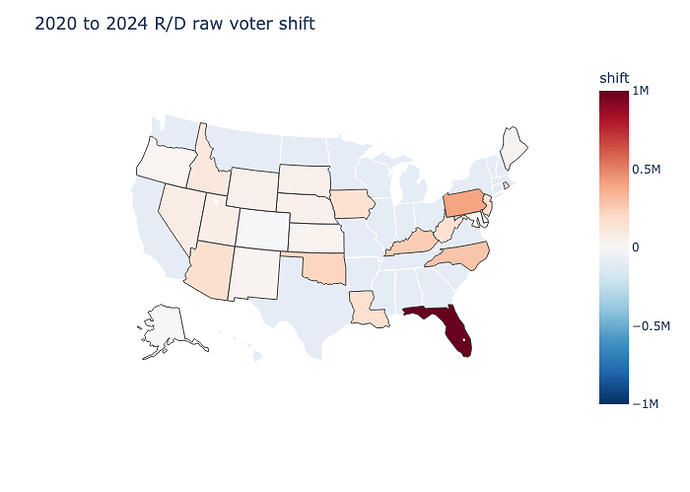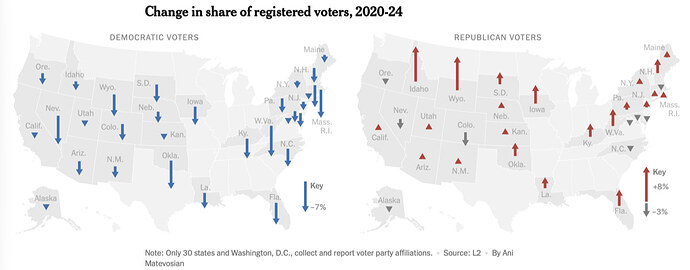Elections, not physics.
Michael Pruser on X (@MichaelPruser) has been posting political party registration data for a subset of states, permitting comparisons of November 2024 v. November 2020 numbers. Here’s a quick look at those data. This analysis considers only Republican (R) and Democrat (D) party registrations; independents are not included.
Data are available for 25 of 50 states. R won 10 of those states in 2020, 13 in 2024. Registrations shifted towards R from D in 24 of 25, by as much as 1,212,171 voters in Florida. That represented a +11.6% change in the R+D total in Florida from 2020. Only Colorado shifted blue, by 10,031 voters (0.5% of the R+D total). Largest percentage increases for R were in Wyoming (+23.5%), West Virginia (+16.4%), and Idaho (+15.7%).
Three states shifted from plurality D to R: FL (from -134,244 to +1,077,927 registrations), KY (from -103,690 to +150,471), and West Virginia (from -8,512 to +144,090). Of course, the latter two states have been solidly red for some time and party registrations have lagged far behind voting patterns.
Encouraging shifts for R include Pennsylvania (from -685,818 net registrations in 2020 to -286,283 in 2024) and Nevada (from -86,723 to -7,176), both won by Trump in 2024.
Of the 25 states, R registrations increased in 19 and decreased in 6. Some states do voter roll cleanups and that might account for some of the decreases. D registrations decreased in 22 states, rising only in New Jersey, Delaware, and Kansas. The D increase in Kansas (6,574) was eclipsed by the R registration increase of 38,082 voters. The D registration advantage declined in the other two states as well.
Net shift among the 25 states was towards R by 3,787,374 voters. This flipped the two-party total from a 2,550,295 voter advantage for D in 2020 to a 1,237,079 R margin in 2024.
For context, as of December 2024 posted numbers, Trump increased his vote total from 2020 by 3,077,642 votes.
Two maps, first showing percentage shift of the R+D total (dominated by small states), and the second showing raw net registration shift (dominated by Florida and Pennsylvania).


